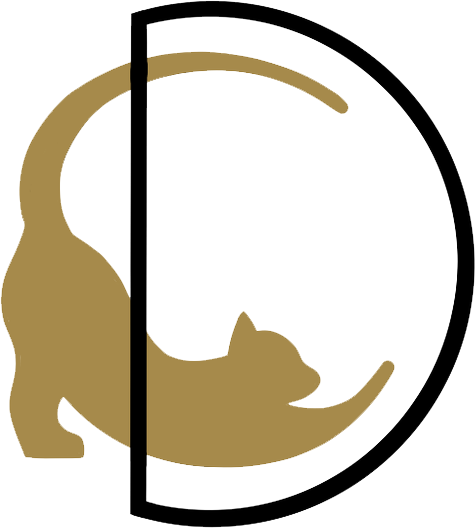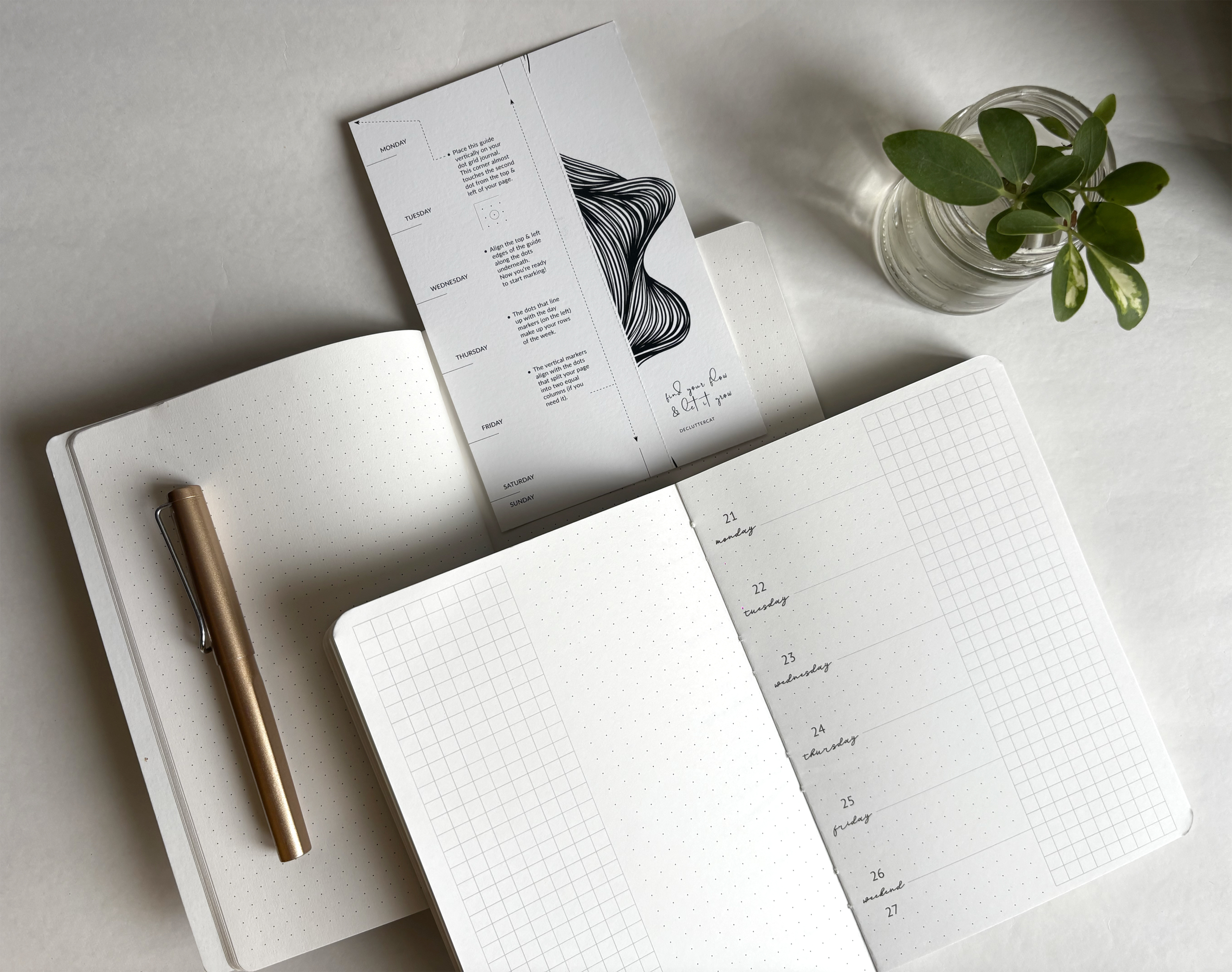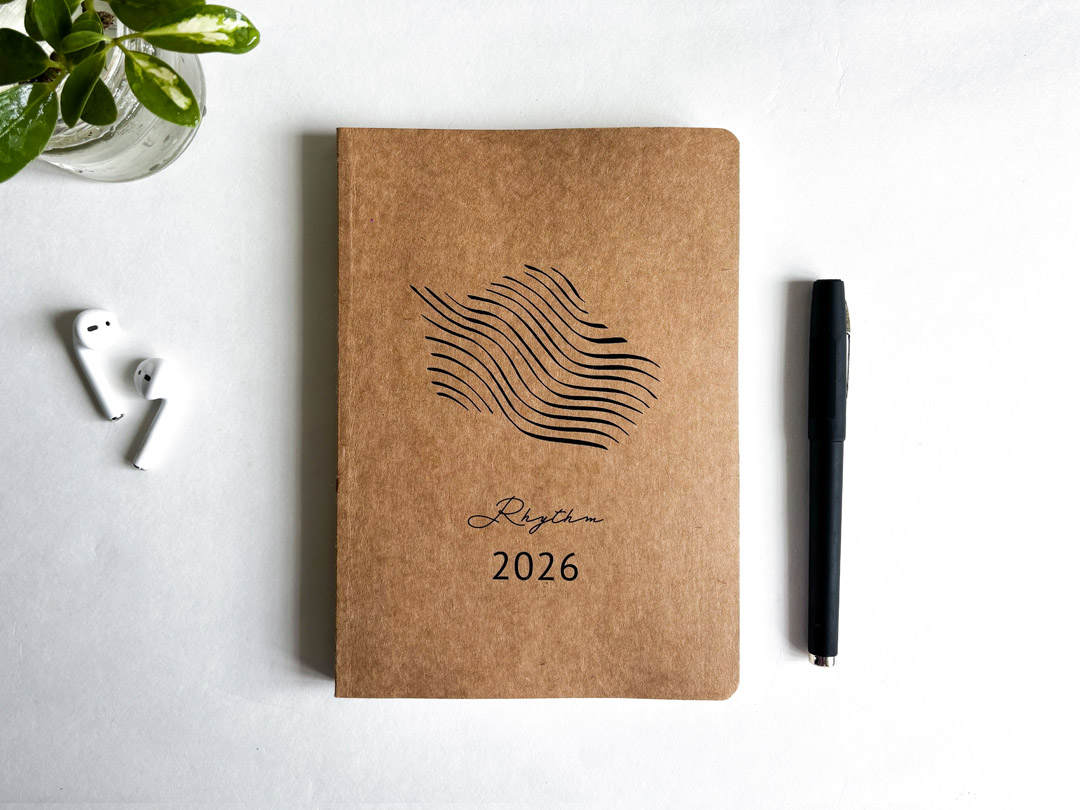The Magic of Space — How The Right Planner Shapes Our Rhythm
We spend so much of life trying to manage time — to-do lists, reminders, calendars.
But more often than not, what we really run out of isn’t time. It’s space.
The kind of space that lets thoughts settle. The kind that helps you notice yourself again.
Most of us wake up already mid-scroll, squeeze breakfast between tabs, and call that a morning. Our days end the same way — full, yet somehow unfinished. It’s easy to confuse a packed day with a purposeful one. After a point being busy starts to like a song played too fast, with no pauses between the notes. All you’d hear then is noise.
That’s why space matters. It’s what gives rhythm its shape. Without space, even the most beautiful rhythm collapses into noise.
White Space — The Pause That Brings Life into Focus
We don’t often think about the invisible parts of life — the gaps, the in-betweens. Yet they’re what make everything else meaningful.
Imagine a painting where every inch is filled — beautiful colours, but no space for the eye to rest, no room to breathe out. It’s the same with our days. The moments of pause — the early-morning quiet, a late night walk after dinner, five mindful sips of your favoutite brew before work — those are the commas that give our lives rhythm.
Designers have a word for this: white space. It’s not just the blank area on a page — it’s what lets everything else breathe. White space draws your eye to what matters and calms the rest. Our lives work the same way. The pauses, the unscheduled time, the spaces we leave open — they’re not empty. They’re fertile. That’s where clarity often shows up quietly, after the noise has passed.
We explored this earlier in our Tiny Weekly Rituals post — those gentle, repeatable pauses that bring balance back to a week that’s otherwise running too fast. You can revisit that here. But for now, let’s linger on this idea of rhythm — and how space helps us find it.
How the Body Finds Its Own Rhythm
Rhythm isn’t something we have to create from scratch — we’re already wired for it.
Our bodies, minds, and even moods follow their own natural cycles.
The circadian rhythm is our 24-hour cycle that tells us when to wake, eat, and rest. Morning light lifts our alertness, dusk slows our energy, night tells our brain to restore.When we follow it, days flow. When we resist it, fatigue follows like shadow.
Ultradian rhythm, a smaller wave hidden within our day — is a 90-minute energy cycle that explains why focus comes in bursts, and why we need breaks to recharge. Every 90 minutes or so, our body naturally asks for a pause — not a long one, just enough to stretch, breathe, look away, sip water.
And if you zoom out, there’s the weekly rhythm, the one we often ignore. Have you noticed how midweek feels different from a Sunday morning or a Friday evening? Our lives pulse in these patterns, too — high energy early in the week, softer tones by the weekend, a natural ebb and flow that modern life tries hard to flatten.

These rhythms are maps of balance, written into our biology. Space is how we read them. When we lose touch with these rhythms — by over-scheduling, by forcing focus, by treating rest like an afterthought — we lose that internal music that keeps us balanced.
Space helps us return to it.
How Space Turns Into Rhythm
There’s a quiet magic that happens when we start protecting space instead of chasing time.
When we stop seeing every blank slot as something to be filled.
A few deep breaths before you begin work.
A short walk between two calls.
A slow meal home cooked meal instead of a rushed brunch plan.
These may sound small, but they’re not. They’re the gentle metronome of a calmer life. The truth is, rhythm isn’t loud — it’s subtle. It doesn’t shout for your attention. It hums underneath the noise, waiting for you to notice it. And once you do, you realise something: rhythm and space need each other. Rhythm gives life continuity; space gives it clarity.
The white space in those spreads isn’t empty; it’s alive with possibility. It lets you notice what deserves more time, what needs less, and what can simply rest.
Weekly Planning System
A week is the perfect rhythm unit — long enough to see patterns, short enough to begin again. It holds the natural rise and fall of our days: the focused energy of the start, the midweek lull, the slower stretch of Friday.
When we plan week by week, we start to move with our body’s rhythm instead of against it.
We stop demanding perfection from every single day. A busy Tuesday finds balance in a slower Wednesday; an undone task becomes tomorrow’s space, not today’s failure.
That’s why rituals — the tiny ones you can repeat every week — matter so much. They help you hold that rhythm when the world tries to pull you in every direction. They anchor us when the world feels too fluid. They remind us that we are supposed to return to ourselves.
Maybe it’s your anchor day — one day each week you keep aside to reset your home or mind. A midweek moment to write a line that captures your day. Maybe a quiet me-time tea ritual, your Sunday plant watering, a midweek phone-free dinner, a desk clearing Friday evening ritual.

These aren’t chores. They’re cues — gentle reminders that you’re allowed to pause.
Over time, these rituals begin to map the invisible shape of your week. They don’t demand perfection; they simply keep you tethered to something that feels like you.
That’s the quiet power of a weekly planning system — it helps us see life in layers — work beside wellness, chores beside calm, meals beside movement. It’s where structure meets softness.
The Planner That Holds Space
That philosophy — that rhythm needs room for weeks — is exactly what inspired Rhythm 2026.
When we designed this planner, we didn’t start with boxes and templates. We started with breath. Every page is intentionally spacious — light on structure, generous with margins, designed to feel like a calm pause instead of a command.
Because planning should feel like a conversation with your week, not a performance.
When you open Rhythm 2026, you’ll notice it doesn’t tell you how to plan — it simply gives you space to listen. You’ll find open weekly spreads that invite you to map your life’s natural rhythm — not by squeezing things in, but by spacing them out. Some weeks will be full of lists and ideas. Others might hold nothing but a doodle or a single sentence that mattered to you. Both are valid.
The white space isn’t decorative — it’s deliberate.
It’s the planner saying: “You don’t have to fill me. You just have to show up.”
And when you do, the unseen starts to take shape — in the whispers of will and rhythm. Over a few weeks of intentional time with your planner, you start discovering your own planning style, a structure that holds your rituals, a rhythm that works for you.
It’s not about perfect productivity. It’s about honest presence.
The planner becomes a mirror of how you live — not a scoreboard of how much you did. Rhyhtm 2026 is designed to hold weeks the way life actually feels: expansive, uneven, alive.
Finding Your Rhythm Again
There’s a certain beauty in rediscovering your own pace. It feels like coming home after running too fast for too long.
When you give yourself space — in your day, in your page, in your thoughts — you begin to notice your rhythm. Not the one dictated by alarms or emails, but the quiet one underneath: the rise and fall of your energy, your mood, your will.
Space helps you see it.
Rituals help you hold it.
And the right tools — like a planner that breathes with you instead of pushing you — help you nurture it.
Because rhythm isn’t about control. It’s about trust.
Trusting that if you pause, life won’t fall apart.
Trusting that your pace is valid.
Trusting that space isn’t laziness — it’s wisdom.
Closing Thought
We often look for balance in big life overhauls. But sometimes, all it takes is a little space — on your desk, in your mind, or on your planner page.
The unseen takes shape in the whispers of will and rhythm.
And when you start planning with the knowledge that — space & rhythm go hand in hand — you don’t just organise your week.
You rediscover your flow.
That’s the quiet magic of space.
It doesn’t demand. It invites.
And in its presence, your rhythm emerges.






